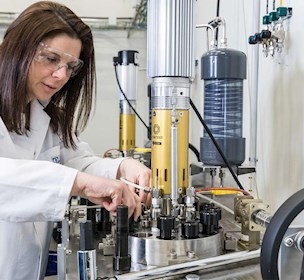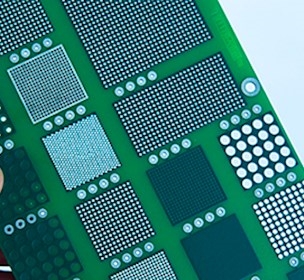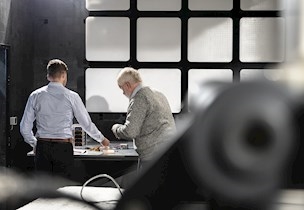Moisture level indicators (MLI) on printed circuit boards (PCB) – consultancy
Reduce or avoid humidity problems by implementing an MLI (moisture level indicator) in your PCB. Benefit from our know-how on humidity and corrosion in challenging environments and on implementing MLIs in your electronics.
Increase robustness and lifetime
The lack of robustness of electronics in the field increases the use of resources to produce new products and e-waste. An increased level of moisture in the PCB will increase the risk of humidity or corrosion issues in electronics.
An MLI can be used to indicate the risk of humidity and corrosion issues in electronic products exposed to very humid environments. The MLI gives a measure of the amount of absorbed humidity (moisture) inside the PCB, making it an efficient way to reduce or avoid humidity problems.
Integrating an MLI into your PCB
The MLI will typically need 1-4 cm2 of the PCB (or less if several parallel layers are utilised) and a suitable measuring circuit capable of measuring small changes in electric capacitance.
Since the MLI is an integrated part of the PCB, it must be ‘designed in’ during the PCB layout process. We can help you do this.
Benefits of using an MLI in a humid environment
These are just some of the benefits you can achieve by using MLIs:
- Knowledge of actual moisture levels in a fleet of products. This allows you to identify potential humidity and corrosion risks
- Ability to measure actual moisture uptake in PCBs. This is more precise than the simpler Time-of-Wetness (ToW) measure used to characterise the ambient air humidity levels
- Less risk of under-engineered (‘too weak’) products
- Less risk of over-engineered (‘too strong’) products
- Possible need for in-field service, repair or exchange based on actual and product-specific data instead of imprecise average values. This allows you to optimise the service effort, reduce costs and, consequently, lower the environmental impact.
Get access to a range of MLI services
We offer consultancy on how to minimise the risk of humidity and corrosion issues for electronic products in challenging environments.
In relation to MLIs, we can help you with:
- The benefits, pros and cons of using MLIs
- How to implement the MLI in an actual product
- How to interpret the signals from the MLI
- Actual MLI response and sensitivity in an actual product.
What is the difference between an MLI and a regular humidity sensor?
A regular humidity sensor can measure humidity in the surroundings of the PCB, whereas the MLI can measure the amount of moisture in the actual PCB. Thus, the measurement of the MLI is a more precise indication of the failure mechanisms related to moisture.
Since the MLI does not measure humidity around the electronics, the MLI is not a replacement for a regular humidity sensor but a natural supplement.
For PCBs that are protected by a potting (or moulding) compound, the MLI may be the only practical solution for indicating moisture inside the potting during use.




